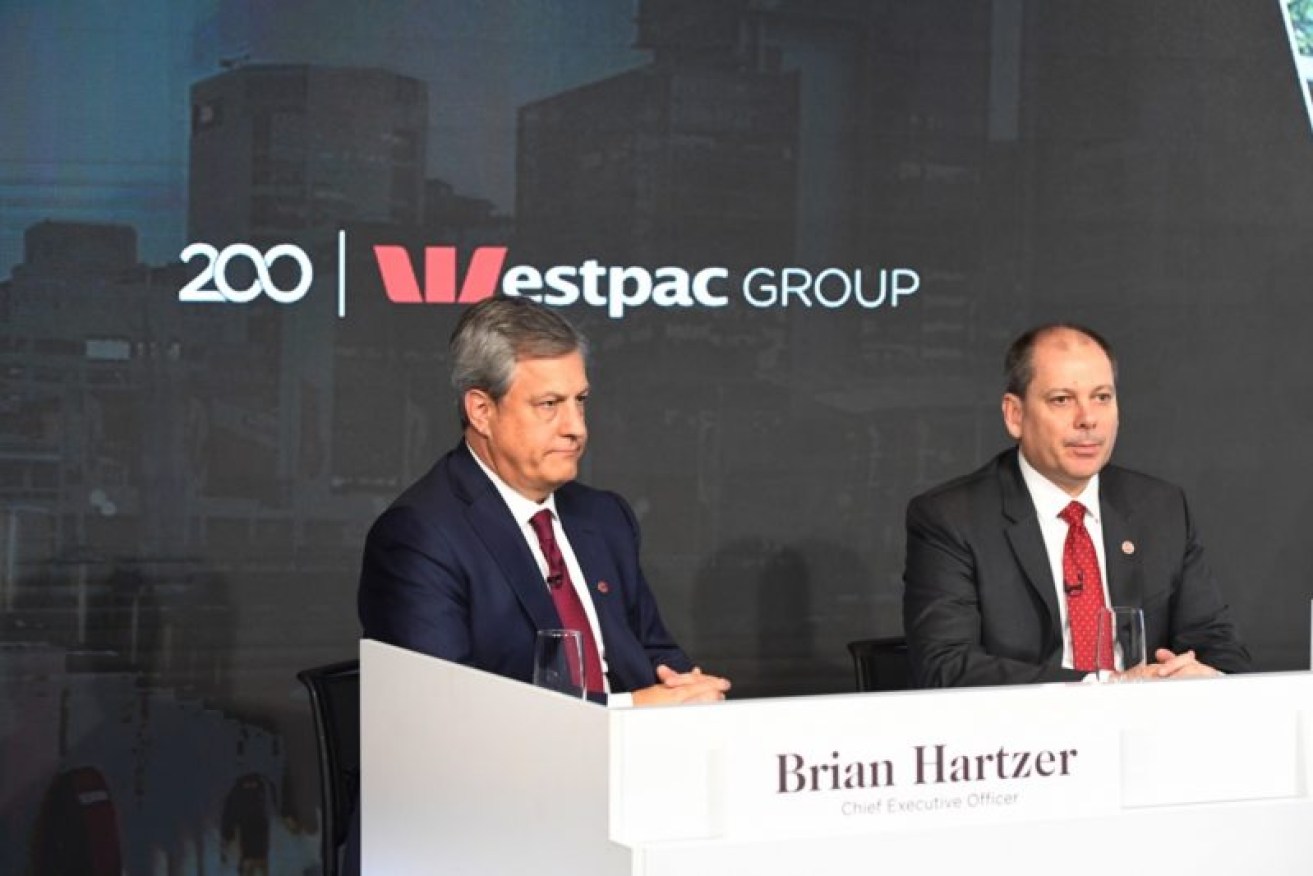Westpac announces $8b profit but more bank jobs are threatened in digital revolution


Brian Hartzer (left) said job losses would depend on digital take-up rates. Photo:AAP
Just days after NAB announced plans to sack 6000 workers over the next three years, the details of Westpac’s $8.06 billion profit result highlight how precarious banking industry jobs will be in coming years.
Speaking at a media conference following the results report, Westpac chief executive Brian Hartzer said: “In the long-term, we think the number of jobs will continue to come down.”
That decline, he said, was expected to be “a gradual process”.
“A lot depends on how quickly Australians switch to digital banking,” Mr Hartzer said.
The trouble with that scenario is that the switch Mr Hartzer is talking about is happening very quickly, meaning the process may not turn out to be gradual at all.
“My comment would be that the volume of transactions across the branch network fell 23 per cent in the last two years,” said Martin North, principal of Digital Financial Analytics.
“Last year they closed 59 branches and got rid of about 500 people. If they need less capacity in the branch network, that will cost jobs, so it seems Westpac is facing the same conundrum as NAB.”

The digital divide: Face-to-face banking is on the slide
The table above shows that digital transactions already swamp face-to-face banking in branches. And within that digital world, mobile banking is booming.
Westpac said 72 per cent of its digital activity is now on mobile, and digital funds transfers jumped 115 per cent to 3.5 million in the six months to the end of September, compared with the first half of its year.
“Now most customers use devices, and digital migration is happening very quickly, but the banks are still not responding fast enough,” Mr North said.
“The old banking model is built on branches and ATMs but the future is mobile which is a different business model and making the change is not easy to do.”
Westpac was downbeat on the likelihood of business-led growth pushing the economy higher in the next year.
“The (residential) construction cycle has peaked,” Mr Hartzer said, before adding there was no sign that business investment was growing enough to take up the slack.
“It’s hard to see what will take its place,” he said.
That reality was reflected in Westpac’s results with mortgage lending up 5.7 per cent for the year compared with only 0.19 per cent for business lending.
Flat wages and prices would mean there would be no pressure to increase interest rates. Westpac predicts that the Reserve Bank’s cash rate, currently at 1.5 per cent, will still be at that level at the end of 2018.
As a result of recent economic data, the RBA is expected to leave rates on hold at its monthly meeting on Melbourne Cup Day, according to independent economist Stephen Koukoulas.
Mr Hartzer also defenced the bank’s decision to go to court with the regulator, ASIC, over allegations that its staff had rigged the bank bill-swap rate after NAB and the ANZ threw in the towel and settled.
“We don’t believe our people behaved unlawfully,” Mr Hartzer said.
The bank was acting proactively to uncover poor practices in its operations and agreed to repay $169 million to wronged customers over the year, Mr Hartzer said.
“A review into our superannuation disclosure is resulting in payments to some customers with pre-existing conditions who did not have the benefit of our improved disclosure practices and who previously had their claims denied,” he said in a statement.








